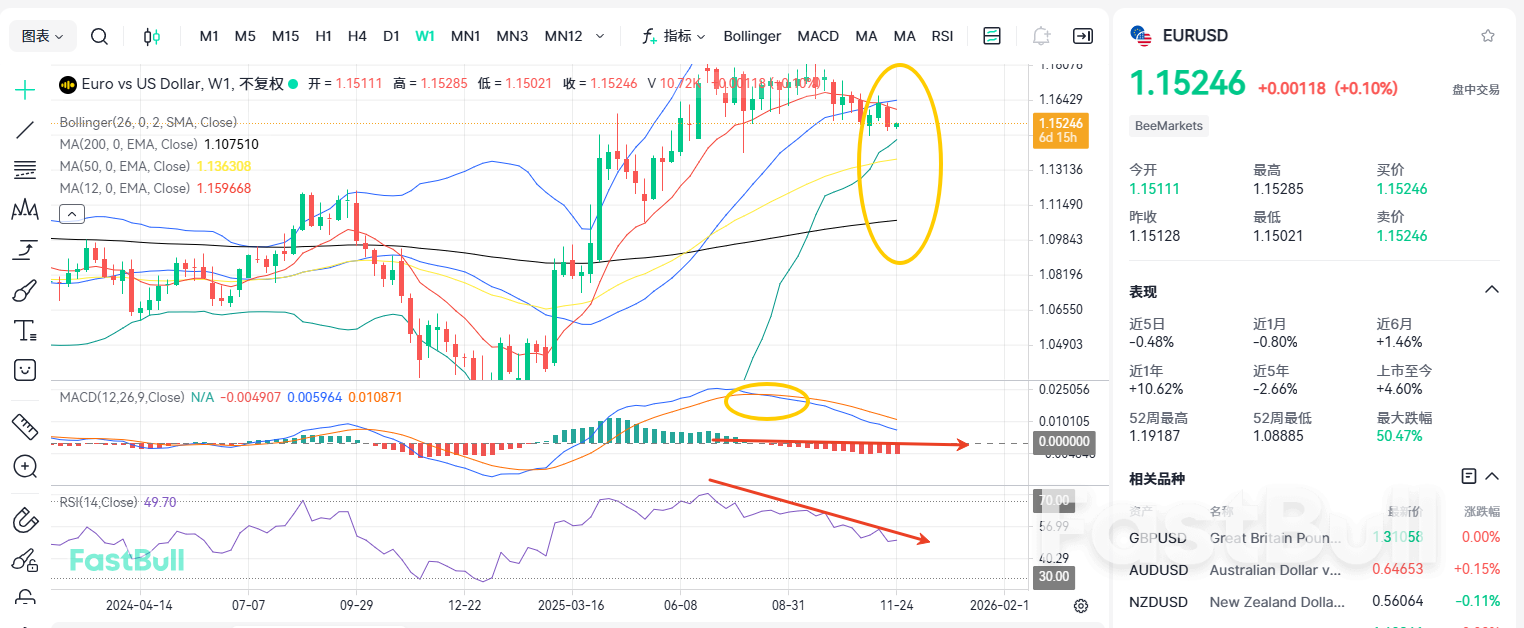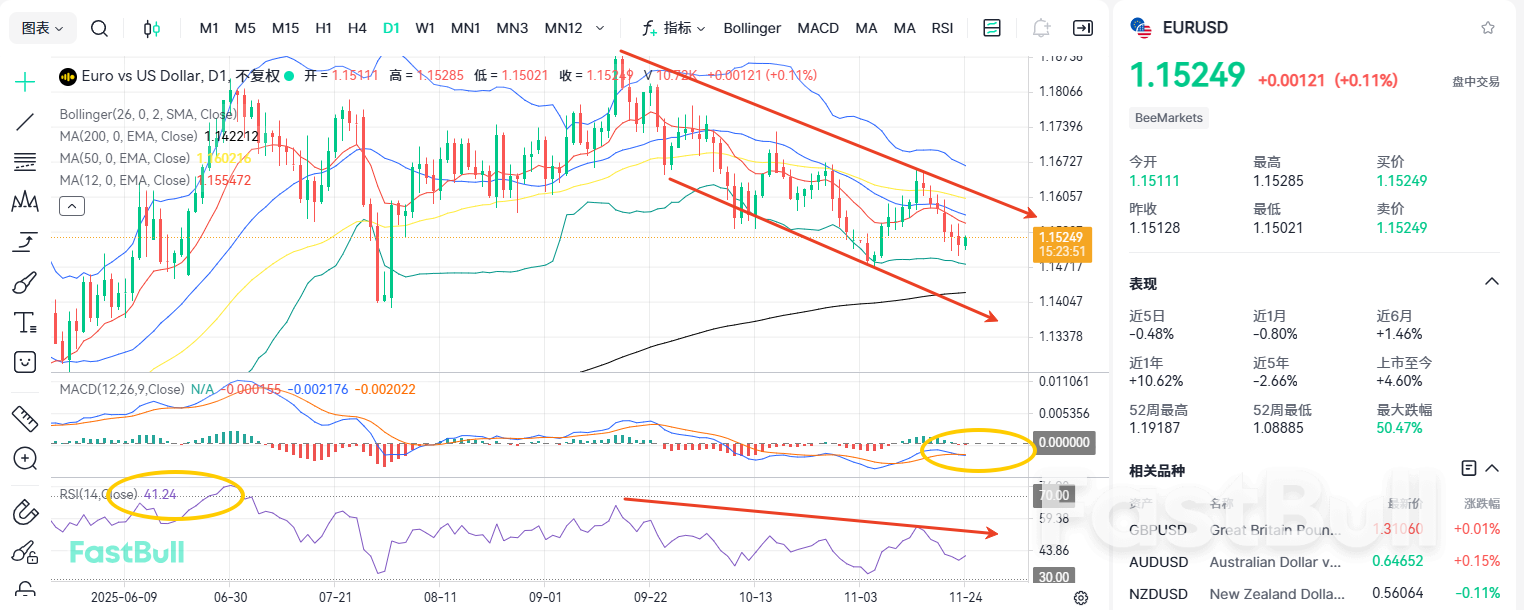Fundamentals
Due to market cautiousness regarding the European Central Bank's (ECB) monetary policy outlook, the euro may appreciate, potentially limiting downside for EURUSD. The market generally anticipates that, with inflation near the 2% target, stable economic growth, and unemployment at historic lows, the ECB will keep interest rates steady through the end of 2026. Preliminary data indicate robust growth in the eurozone private sector in November, slightly below the two-year high hit in October, aligning with expectations and reinforcing cautious market sentiments towards the ECB's future stance. ECB President Christine Lagarde stated on Friday that the central bank will continue to monitor inflation risks closely and adjust rates as necessary to maintain the 2% inflation target. Gabriel Makhlouf, member of the ECB Governing Council and Governor of the Central Bank of Ireland, remarked on Thursday that the current monetary policy settings are appropriate and are unlikely to be adjusted unless significant changes occur. S&P Global's data released on Friday indicates that the November composite PMI for the Eurozone stood at 52.4, slightly below October's figure of 52.5, continuing to remain above the crucial 50 threshold that demarcates expansion from contraction, thus aligning with market expectations. The sectoral performance shows divergence; the services PMI was at 53.1, surpassing both the previous month's 53 and the consensus forecast of 52.8, marking the strongest monthly performance in a year and a half. Overall, the Eurozone’s sectors exhibited resilience in November, with the services sector achieving its best performance in half a year, offering optimism for accelerated year-end economic growth. Despite an unexpectedly weak manufacturing sector, the rapid expansion of services has supported the overall economy’s healthy growth trajectory. Manufacturing, however, continues to exert downward pressure, with the November PMI preliminary reading at 49.7, significantly below October's 50, and re-entering contraction territory.
Recently, the EURUSD volatility has been driven not only by fundamental factors such as interest rate and inflation expectations but also by macroeconomic conditions and risk sentiment dynamics. On one hand, market expectations for a Federal Reserve rate cut in December have diminished, with the probability of a 25 basis point rate reduction at the December 10 meeting decreasing from 62% a week ago to around 50%. A month prior, the market widely anticipated a rate cut, with the likelihood reaching as high as 96%. On the other hand, recent global equity sell-offs have significantly amplified risk aversion. In an environment of waning risk appetite, the U.S. dollar, as a traditional safe-haven currency, garners increased capital inflows. Investors are reallocating from equities and high-risk assets to cash and highly liquid instruments. This “safe-haven dollar demand” often temporarily offsets the negative impact of weakening rate expectations, maintaining the U.S. Dollar Index’s strength at elevated levels, and applying downward pressure on the EURUSD below the 1.16 level.
Technical Analysis
In the 1D timeframe of the EURUSD, the MACD's MACD line and signal line retracted near the zero-axis and subsequently generated a death cross, indicating continued downside momentum. The Bollinger Bands are contracting downward, with SMAs diverging downward, while the price consolidates along the EMA12. Following a large bearish candlestick last week, the RSI reading is at 41, reflecting prevailing bearish sentiment. The current correction remains within the downward channel, with a high likelihood of testing the lower Bollinger Band around 1.147, unless resistance at the upper boundary of the channel is broken. In the 1W timeframe, Bollinger Bands are narrowing, the EMA12 has turned downward, and the MACD has generated a death cross with the MACD line and signal line approaching the zero-axis, suggesting the decline is not yet complete. The RSI stands at 49, with successive lower highs, indicating strong market hesitation. Short-term support levels are identified near the middle Bollinger Band and the EMA50. It is recommended to go short at the highs.


Trading Recommendations
Trading Direction: Sell
Entry Price: 1.153
Target Price: 1.12
Stop Loss: 1.175
Support: 1.145, 1.14, 1.12
Resistance: 1.182, 1.192, 1.2














